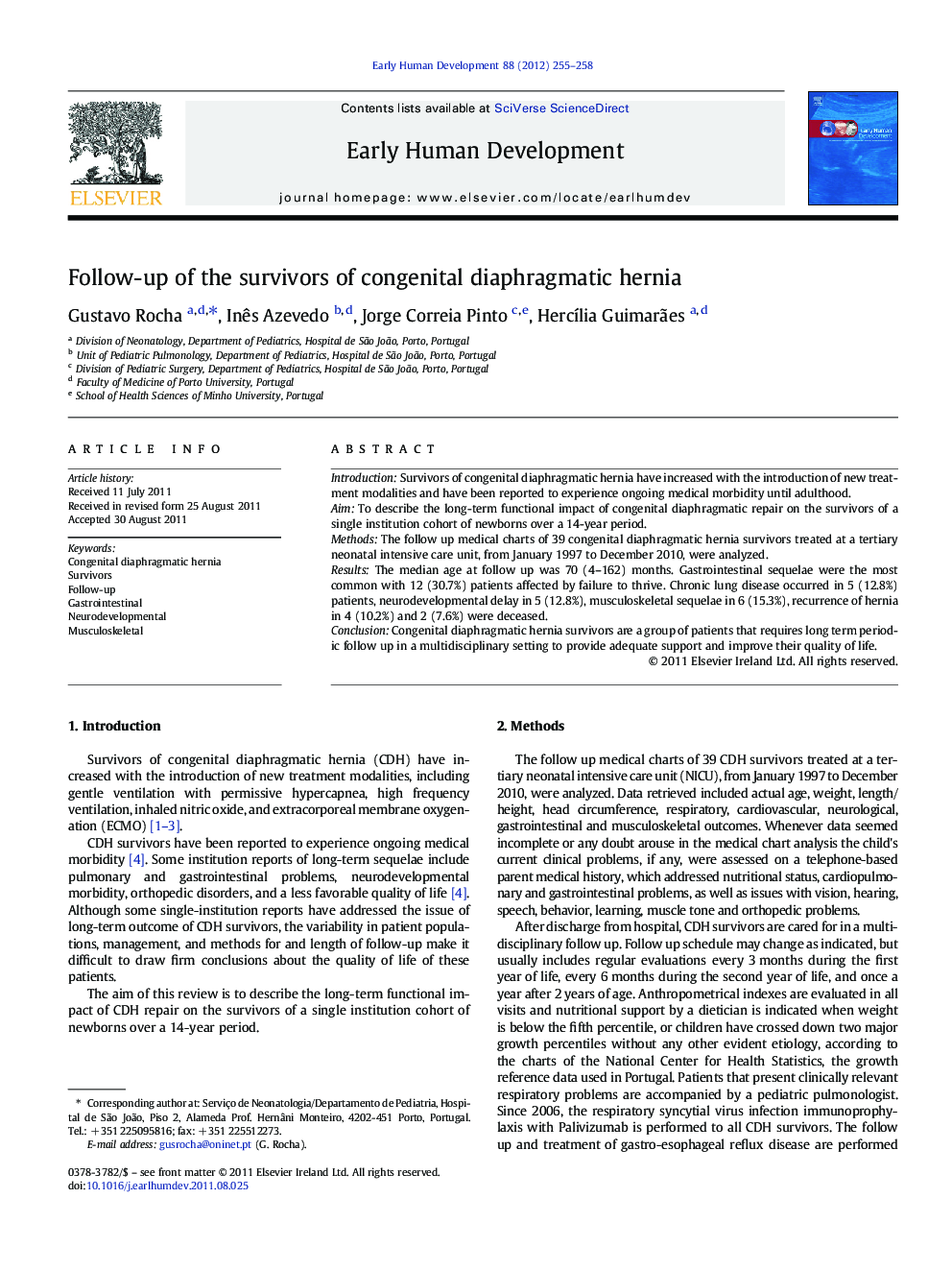| Article ID | Journal | Published Year | Pages | File Type |
|---|---|---|---|---|
| 3918392 | Early Human Development | 2012 | 4 Pages |
IntroductionSurvivors of congenital diaphragmatic hernia have increased with the introduction of new treatment modalities and have been reported to experience ongoing medical morbidity until adulthood.AimTo describe the long-term functional impact of congenital diaphragmatic repair on the survivors of a single institution cohort of newborns over a 14-year period.MethodsThe follow up medical charts of 39 congenital diaphragmatic hernia survivors treated at a tertiary neonatal intensive care unit, from January 1997 to December 2010, were analyzed.ResultsThe median age at follow up was 70 (4–162) months. Gastrointestinal sequelae were the most common with 12 (30.7%) patients affected by failure to thrive. Chronic lung disease occurred in 5 (12.8%) patients, neurodevelopmental delay in 5 (12.8%), musculoskeletal sequelae in 6 (15.3%), recurrence of hernia in 4 (10.2%) and 2 (7.6%) were deceased.ConclusionCongenital diaphragmatic hernia survivors are a group of patients that requires long term periodic follow up in a multidisciplinary setting to provide adequate support and improve their quality of life.
